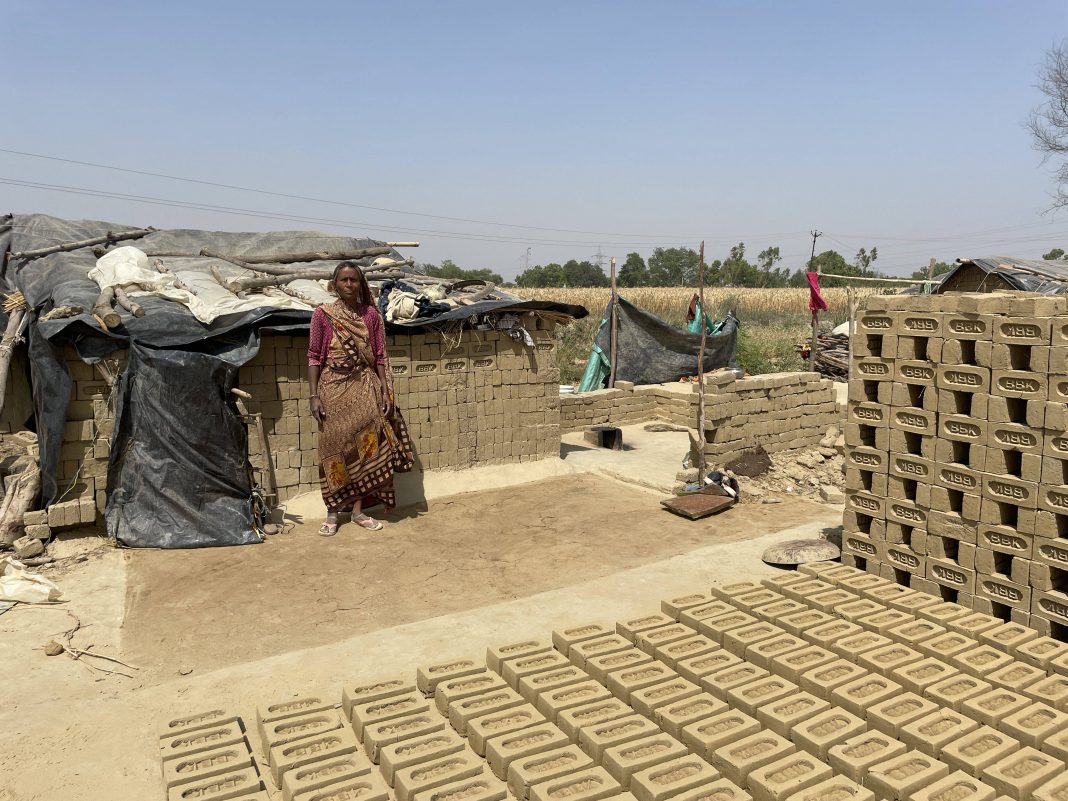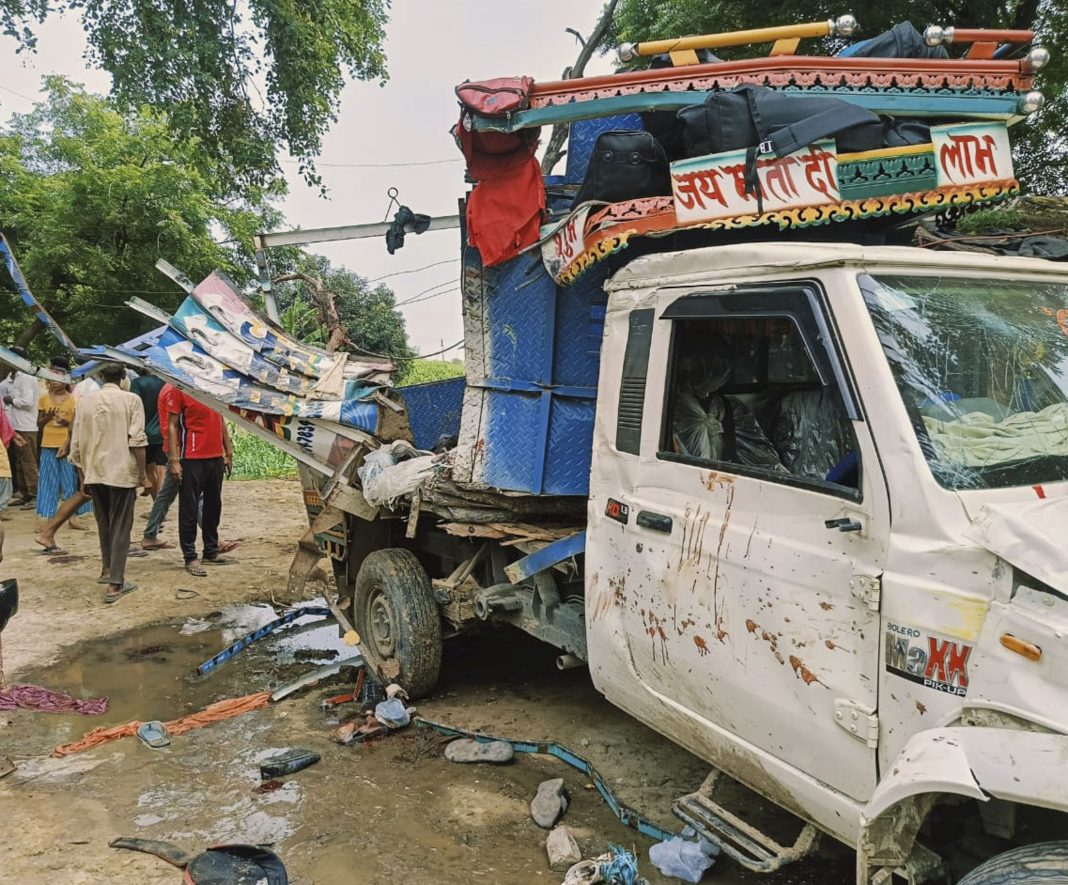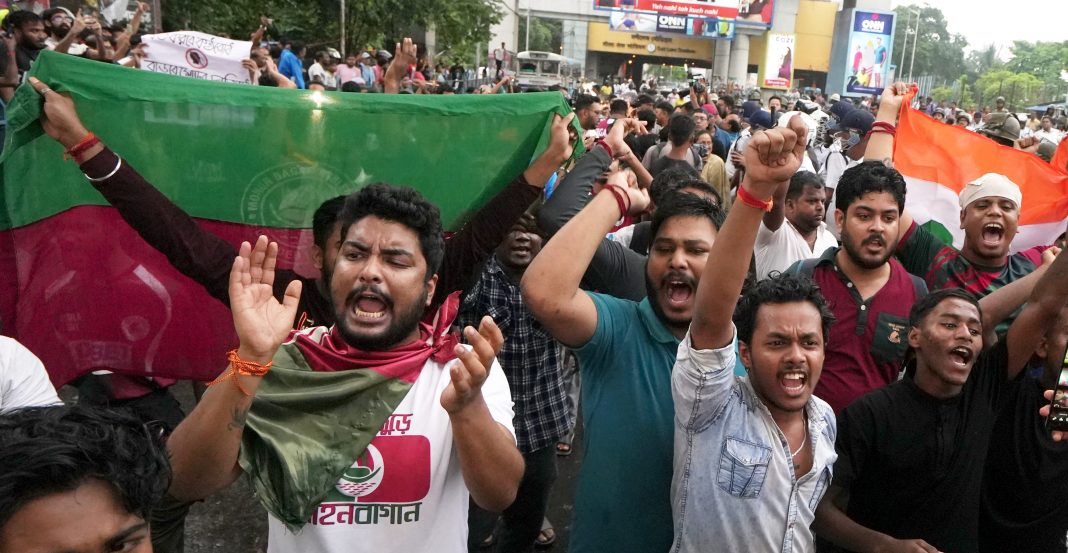Smoke swirls from brick kiln chimneys rise up lazily, clouding around sleek solar panels that reflect the monsoon skies above, the ancient and the very new melding easily across the flat lands of western Uttar Pradesh where solar energy is changing lives in ways big and small.
The harsh summer – of endless days of the sun beating down mercilessly – has given way to rain and sullen clouds. But the stored solar energy in the panels continues to do its work, bringing down pollution in the traditional brick kiln industry and providing electricity, and digital connectivity, to villages in the area.
Eight brick kilns in Aligarh district’s Kodiaganj, Pilakhana and Akrabad have already made the pioneering shift from coal to solar panels to meet their electricity needs. It’s a fraction of the district’s 555 brick kilns – according to a report by the UP Pollution Control Board – but at least a beginning.
Om Prakash Sharma, who owns a brick kiln, said the initial costs were steep at Rs 7 lakh but the long-term benefits have been substantial.
He has installed 16 solar panels of 455 watts that he uses to power the generator of the brick kiln used to generate electricity.
“We save about Rs 50,000 every month through the solar panels,” he told PTI. Sharma said he has also extended the supply to the huts of those who work in his kilns.
“It cost me nothing extra and I thought it would help them too.”
The solar panels are used to power the generator, which takes care of various operations of the brick kilns, including supplying electricity to workers’ huts. Diesel and coal were used for this earlier.
And so it is that Kalavati, who travelled from her village in Gaya, Bihar, to look for work in Kodiaganj with her three children first encountered the ‘power’ of solar energy. It was last October, the first time she had stepped out of her village, and she remembers being surprised that the workers had electricity in their huts.
“When I first saw the solar panels, I didn’t know what they were. It looked so incongruous. My first thought was that it looks expensive and if the owner has money why hasn’t he increased our wages.
“We were told it would be used to replace coal and oil, and wondered how and why it would possibly make any difference to us. It was not until we saw wires reaching our makeshift huts that we realised it would benefit us too,” said the young mother of three children, all under six, who now has power lighting and fans.
The workers can also charge their phones, a huge departure from earlier times when they relied on oil lamps and pilfered electricity.
“I earlier had to go to the village of Pilakhana, about 3.5 kilometres away, and would get my phone charged for Rs 10 for one hour. Now I can do it at home,” said 18-year-old Anil, a brick kiln worker.
It’s not just about the phone. The teen said he can now study at night and complete his Class 10 exams. Besides, the risk of snake and animal attacks has also reduced.
“Earlier, we had to stay vigilant all night. At times even take turns to guard but now that has at least stopped. We can sleep a little more peacefully,” said Ram Kumar, a migrant worker from Bihar’s Gopalganj who works at the brick kiln in Pilakhana village.
Over a period of time, a degree of environmental consciousness has set in. According to Sudhir Gupta, who owns KKK Bricks, the state government’s advice on how to reduce pollution propelled him to install solar panels.
“This was the only way which made me think I could reduce my dependence on coal and diesel,” he said.
Brick kiln factories in India are a significant source of air pollution, emitting harmful pollutants like particulate matter, black carbon and sulphur dioxide, which contribute to poor air quality and adverse health effects. Traditional kilns are also deeply intertwined with India’s economy.
It is estimated that India has more than 100,000 brick kilns producing about 250 billion bricks annually, employing about 15 million workers and consuming about 35 million tonnes of coal annually.
Interestingly, the shift to solar energy in western Uttar Pradesh is not confined to the kilns.
Workers are also investing in smaller panels to meet their daily needs.
“We saved up and bought a small solar panel,” said Sonu Singh, a young 19-year-old worker who moved to UP from Jharkhand.
“It’s not much, but it helps with the basics,” he added. A 40 watt solar plate costs Rs 1,700 and can power one fan, one light bulb and one charging point.
Each worker earns an average of Rs 8,000 per month – they are paid Rs 300 for every 1,000 bricks they make.
But the investment is clearly worth it. In a testament to increasing awareness, several of the workers’ makeshift homes, though modest, are equipped with small solar panels.
In peak summer, a single shopkeeper in a village like Kodiaganj, with a population of around 8,000, can sell up to 20 plates per month, said Ismail Khan, a shopkeeper. This drops during the rains.
Despite this seasonal fluctuation, overall demand for solar panels is on the rise, he added.
The workers’ lives are a stark reminder of the broader challenges facing the world. Githartha Das, a social entrepreneur and development professional at Transform Rural India said solar energy could revolutionise rural lives and livelihoods if scaled up. “But it comes with a lot of costs as there is a lot of power needed to create the energy required for a brick kiln to work. It’s about initial costs and also the cost of the battery. If the cost can be reduced through initial subsidies by government or through partnership then could be a revolutionary intervention.”
There is a small flip side too.
The extreme heat remains an insidious adversary for these brick kiln workers and many stopped using the fans as it just circulated more heat in their huts.
Kalavati experienced the severity of this heat first hand when she suffered a heat stroke and had to be hospitalised.
“The heat was unbearable, and the fans actually increased it by circulating hot air. Even with fans, this year we felt like being in an oven,” she said.
“It’s a paradox,” added worker Rakesh Kumar.
“The fans help a bit at night, but during the day, they make it worse. We try to stay hydrated and take breaks in the shade, but it’s tough.”
Despite these challenges, for workers like Kalavati, the transition to solar power has been a mixed blessing.
As the sun dips below the horizon and evening sets, the workers, exhausted from their day’s labour, find some solace in the modest comforts these panels provide.
Kalavati sits outside her home, watching her children play, while a bulb lights up her little home behind. “It’s not perfect, but it’s better than before,” she said. (PTI)




